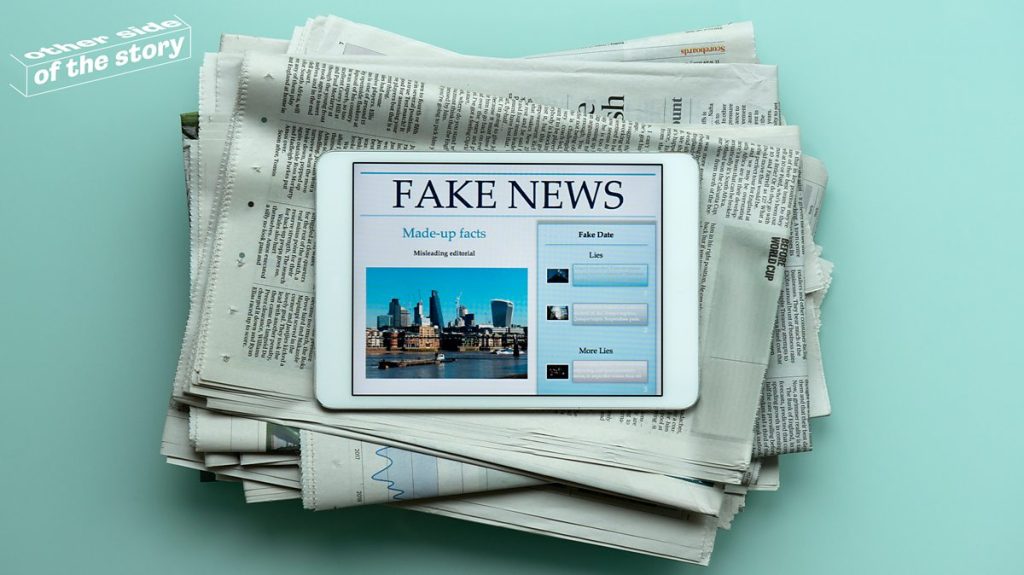Listen to the article
The Rising Challenge of Detecting Misinformation in the Digital Age
In an era where information spreads at unprecedented speed across social media platforms, the ability to detect misinformation has become increasingly difficult, especially when those sharing it are unaware they’re propagating falsehoods.
Media literacy experts point out that misinformation – false information shared without malicious intent – presents a particular challenge because it often comes from trusted contacts who believe they’re sharing legitimate news.
“When people unknowingly share fake news, the traditional red flags that might alert us to disinformation are absent,” explains Dr. Claire Wardle, co-founder of the Information Futures Lab at Brown University. “There’s no obvious deception involved, just a failure to verify before sharing.”
Verification has become the cornerstone of combating this problem. Experts recommend a multi-source approach when encountering questionable claims online. The most effective strategy involves tracking down the original reporting on which a social media post or forwarded message is supposedly based.
Fact-checking organizations emphasize that readers should seek out at least two or three reliable news sources that present balanced coverage before accepting claims as factual. This balanced approach means finding sources that present multiple perspectives on an issue, allowing readers to form a more complete understanding.
“The key difference between quality journalism and propaganda is that good reporting acknowledges complexity and presents various viewpoints, even when they conflict,” says Alexios Mantzarlis, former director of the International Fact-Checking Network.
The distinction between misinformation and disinformation remains crucial for understanding the digital information landscape. While disinformation involves deliberate deception with intent to mislead, misinformation can spread through well-meaning individuals who simply didn’t take the time to verify what they’re sharing.
Recent studies by the Reuters Institute for the Study of Journalism found that misinformation shared by ordinary users often reaches more people than deliberate disinformation campaigns, precisely because it comes from trusted personal connections rather than suspicious sources.
The challenge has grown more complex with the rise of AI-generated content and deepfakes, which can create convincing but entirely fabricated “evidence” that even careful readers might accept as genuine. These technological developments have made the verification process more difficult even for those actively trying to distinguish fact from fiction.
Media literacy educators have begun integrating misinformation detection into school curricula, teaching students to question sources, check publication dates, look for corroborating evidence, and understand the difference between news and opinion content.
“We’re essentially trying to rewire how people process information,” says Sam Wineburg, founder of the Stanford History Education Group. “The instinctive trust we place in information shared by friends and family needs to be balanced with healthy skepticism.”
Tech platforms have also introduced features to combat misinformation, including warning labels, reduced distribution for flagged content, and links to fact-checking resources. However, critics argue these measures often come too late, after misinformation has already gone viral.
Experts suggest that individuals adopt a personal verification routine before sharing content online. This includes checking the publication date (as old stories are often recirculated out of context), confirming information across multiple reputable sources, and being particularly cautious with emotional content that seems designed to provoke outrage.
The growing consensus among media literacy advocates is that addressing misinformation requires both individual responsibility and systemic approaches, including improved platform design, stronger journalism, and educational initiatives.
As one fact-checking expert put it: “In a world where anyone can publish, everyone must become their own editor.”
Verify This Yourself
Use these professional tools to fact-check and investigate claims independently
Reverse Image Search
Check if this image has been used elsewhere or in different contexts
Ask Our AI About This Claim
Get instant answers with web-powered AI analysis
Related Fact-Checks
See what other fact-checkers have said about similar claims
Want More Verification Tools?
Access our full suite of professional disinformation monitoring and investigation tools




13 Comments
Verification is key. With social media, it’s easy for false information to spread rapidly, even when the sharer is unaware it’s inaccurate. Taking the time to check multiple sources is crucial.
Absolutely. Media literacy is so important these days. We need to teach people how to critically evaluate information and not just blindly share things without verifying first.
Curious to see how the mining and energy sectors are tackling this issue of misinformation versus disinformation. Proper fact-checking protocols seem essential to maintain trust and transparency.
Interesting distinction between misinformation and disinformation. Fact-checking is so critical in the digital age when information spreads so quickly. We all have a responsibility to verify claims before sharing them.
As someone who follows mining and commodities news closely, I appreciate the distinction between misinformation and disinformation. Maintaining integrity of information is crucial in these sectors.
Agreed. With so much at stake, it’s critical that people in these industries are rigorous about verifying information before sharing or acting on it.
Thoughtful piece on the nuances between misinformation and disinformation. In the fast-paced world of mining news, I can see how this distinction is important to understand and address.
Definitely. With the high stakes involved, mining companies and investors need reliable, verified information to make sound decisions. Fact-checking is crucial.
Interesting insights on the difference between misinformation and disinformation. In the mining and energy sectors, where information can move markets, maintaining information integrity is critical.
This is an important topic, especially for industries like mining and energy where misinformation can have significant impacts. Fact-checking and due diligence are essential to combat the spread of false claims.
As someone who follows the mining and commodities space, I’m concerned about the potential impacts of misinformation. Fact-checking and verification protocols seem essential to maintain trust and transparency.
Absolutely. With so much at stake, mining and energy companies have a responsibility to ensure the information they share is accurate and reliable. Rigorous verification is key.
Appreciating the emphasis on media literacy and the multi-source approach to combating misinformation. This is so relevant for industries like mining that rely on accurate, up-to-date information.